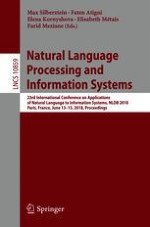2018 | OriginalPaper | Chapter
An Unsupervised Approach for Cause-Effect Relation Extraction from Biomedical Text
Authors : Raksha Sharma, Girish Palshikar, Sachin Pawar
Published in: Natural Language Processing and Information Systems
Publisher: Springer International Publishing
Activate our intelligent search to find suitable subject content or patents.
Select sections of text to find matching patents with Artificial Intelligence. powered by
Select sections of text to find additional relevant content using AI-assisted search. powered by
Abstract
cause, lead, result etc). We observe that some generic verbs have a domain-specific causative sense (inhibit, express) and some domains have altogether new causative verbs (down-regulate). Not every mention of a generic causative verb (e.g., lead) indicates a CE relation mention. We propose a linguistically-oriented unsupervised iterative co-discovery approach to identify domain-specific causative verbs, starting from a small set of seed causative verbs and an unlabeled corpus. We use known causative verbs to extract CE arguments, and use known CE arguments to discover causative verbs (hence co-discovery). Since causes and effects are typically agents, events, actions, or conditions, we use WordNet hypernym categories to identify suitable CE arguments. PMI is used to measure linguistic associations between a causative verb and its argument. Once we have a list of domain-specific causative verbs, we use it to extract CE relation mentions from a given corpus in an unsupervised manner, filtering out non-causative use of a causative verb using WordNet hypernym check of its arguments. Our approach extracts 256 domain-specific causative verbs from 10, 000 PubMed abstracts of Leukemia papers, and outperforms several baselines for extracting intra-sentence CE relation mentions.